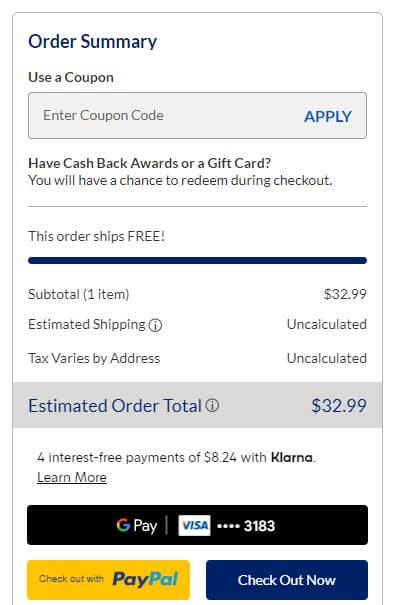Thought Leadership
8 must-know eCommerce trends for 2023
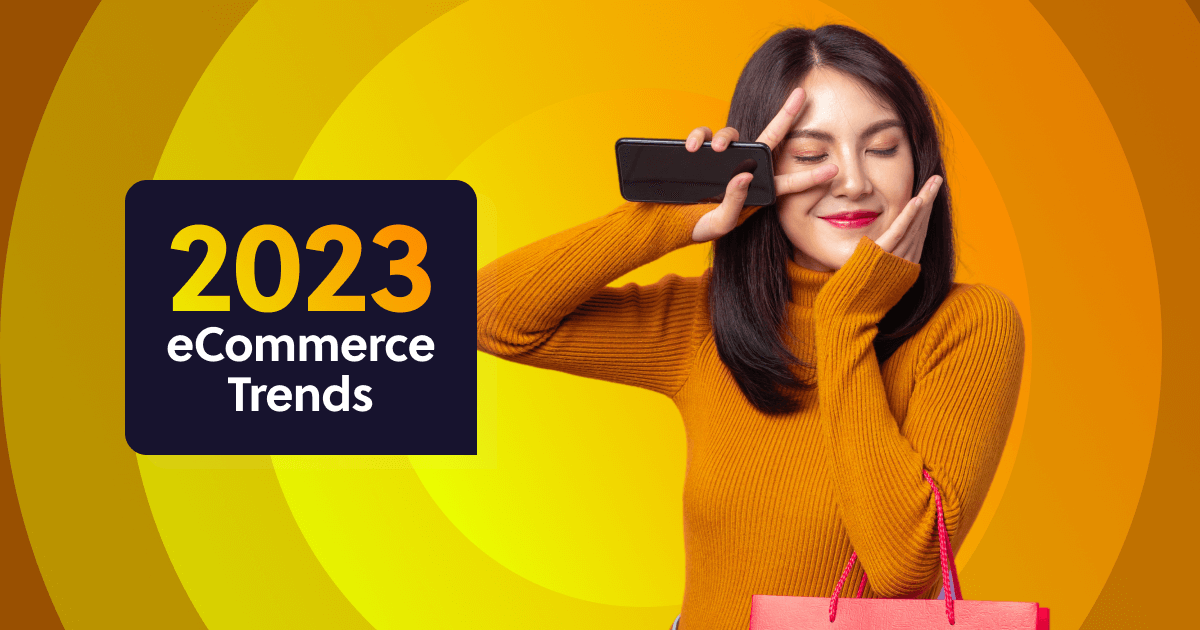
eMarketer projects global retail eCommerce sales will rise to nearly $6.3 trillion in 2023 from $5.7 trillion in 2022. But this rosy outlook doesn’t mean that eCommerce businesses can just sit back and enjoy the ride in the coming years.
It’s not getting any easier for online retailers to retain customers, especially since the pandemic. PwC’s 2022 Customer Loyalty Survey found that 15% of them would switch brands, not because of a bad experience but simply because they preferred another brand’s experience. Which means they would happily spend their $6.3 trillion with companies other than yours.
Whether you’re an enterprise-level brand or a new online store, you’ll grab the greatest share of 2023’s increased market if you capitalize on the top eCommerce trends.
These eight eCommerce industry trends make acquiring and retaining customers faster and easier. Use them to make your customers happier and stay ahead of the competition.
1. Hyper-personalize online shopping with augmented reality
Augmented reality (AR) strives to make virtual products as “tangible” as possible and make online shopping closer to an in-store experience. Online B2C or B2B businesses that integrate AR into their personalized shopping experiences are going to retain and attract more customers — particularly younger generations.
Imagine letting customers try on clothes and shoes, test lipstick shades, and place furniture in a room without leaving their homes. Nike was an early AR pioneer, letting customers use an app to snap a photo of their feet to determine shoe size.
A 2022 Dynata survey showed more than 90% of Gen Z shoppers wanted to use AR while shopping online.
Harvard Business Review found that AR reduces anxiety for customers “who have never purchased a specific product from an online channel.” Access to AR raised their likelihood of purchasing by almost 20%.
And you don’t need to be a multi-billion dollar brand like Nike to implement AR on your eCommerce site. There are many third-party providers like ModiFace, which specializes AR experiences for beauty brands.
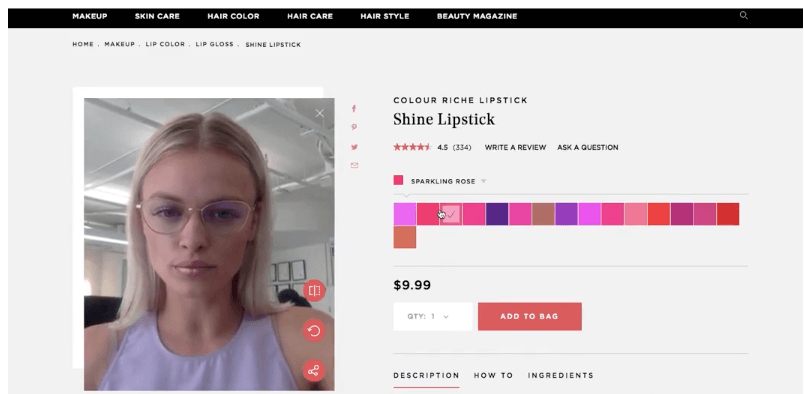
2. Boost LTV with prepaid subscriptions
2022 was a tumultuous year for retailers and direct-to-consumer brands. Customer acquisition costs continued to outpace customer lifetime value (LTV), brand loyalty eroded at a record pace, and inflation concerns have caused shoppers to close their wallets. In response to this volatility, trends in the eCommerce industry indicate that brands will double down on increasing LTV by launching prepaid subscriptions.
Prepaid subscriptions allow consumers to subscribe to your product for a longer term in exchange for a steeper discount. For instance, Elysium, a health and wellness brand, offers 33% off for an annual subscription, 25% off for a six-month subscription, and 17% off for a monthly subscription.
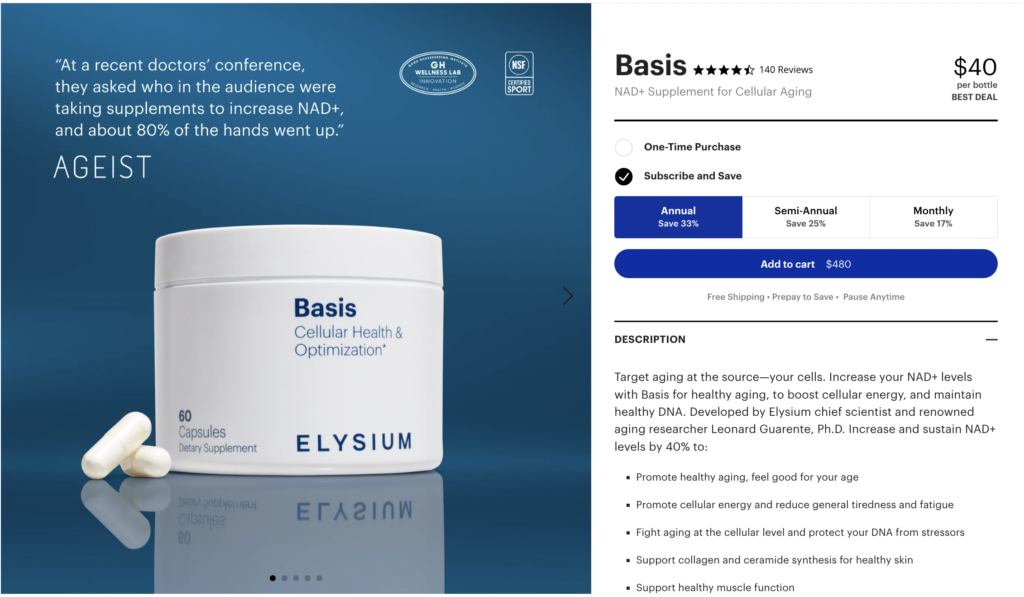
The benefits to brands are apparent. Prepaid subscriptions unlock upfront subscription revenue, enabling you to better forecast, which given ongoing market uncertainty, is a huge advantage. More importantly, prepaid subscriptions will improve your CAC: LTV ratio, driving greater ROI on your acquisitions efforts. In fact, Ordergroove data shows that on average prepaid subscriptions can generate four times the LTV of pay-as-you-go subscriptions.
A common question we hear when discussing prepaid subscriptions vs. pay-as-you-go subscriptions is, “How are they different?” Pay-as-you-go subscriptions are necessary for building stability and combating market changes. Pre-paid subscriptions unlock even more business stability by supercharging your ability to boost LTV.
3. Offer returns without printed labels or packaging
In recent years, a top commerce industry trend would have been free returns on any item bought online. Now, free returns are an expectation, making convenient returns the next hurdle for merchants. It’s one of many online retailer ecommerce trends that are becoming the standard.
According to the Dynata survey, 34% of global consumers called “complicated” returns a key drawback of eCommerce. Even worse, Incisiv found that 95% of surveyed customers were unlikely to stick with a brand after a poor returns experience.
But let’s face it. You probably can’t let customers keep items they want to return, like Amazon. But you can make returns much easier for the customer.
FedEx merchants can send QR codes to customers who initiate a return. Customers then visit a FedEx retail location, show the code from their phones, and FedEx prints the label. Thanks to a partnership with Happy Returns, FedEx customers don’t even need the original packaging. Happy Returns gathers products heading back to the same merchant and ships them in bulk, saving the merchant money.
Besides reaching out to FedEx to learn more about their label-less and package-less returns, find an eCommerce integration that makes it easy for customers to initiate and track returns.
Loop is a popular Shopify integration app. Loop lets customers turn returns into exchanges, so you keep more revenue. It integrates with your eCommerce store, so it suggests and even upsells products to replace the unwanted one. BigCommerce users will need to build an integration with Loop.

4. Use artificial intelligence to predict customer behavior
The holy grail of eCommerce personalization is predicting customer behavior, so you can quickly pivot your marketing strategies. Advancements in artificial intelligence (AI) are making this possible on a large scale.
Customers are more comfortable with AI than you might think. In 2022 research from the Customer Data Platform Resource, 81% of consumers said they are “open” to giving AI a role in providing personalized experiences.
Most eCommerce platforms use basic machine learning for product recommendations based on a customer’s browsing and order history. But now AI can predict when customers are likely to churn, letting you automatically launch a campaign to keep them in the fold.
Accurate churn prediction requires large amounts of customer data, which many companies house in a CRM. Salesforce, for example, uses a customer’s support history, purchase frequency, survey results, social media posts, and more to determine whether a customer is likely to jump ship. Salesforce even recommends specific courses of action based on why the customer is likely to churn.
In this way, AI helps you personalize your communications with unhappy customers. You can’t use the same marketing tactics as you would for a happy customer who buys dependably.
But Salesforce isn’t the only platform that assists with churn prediction.
Medallia integrates with Shopify and BigCommerce to trigger customer surveys after a purchase. It analyzes customer responses and performs sentiment analysis on any text-based feedback. From there, it generates a list of customers most likely to churn.
If you manage a subscription experience with Ordergroove, it anticipates subscriber churn by determining which customers have excess product on hand.
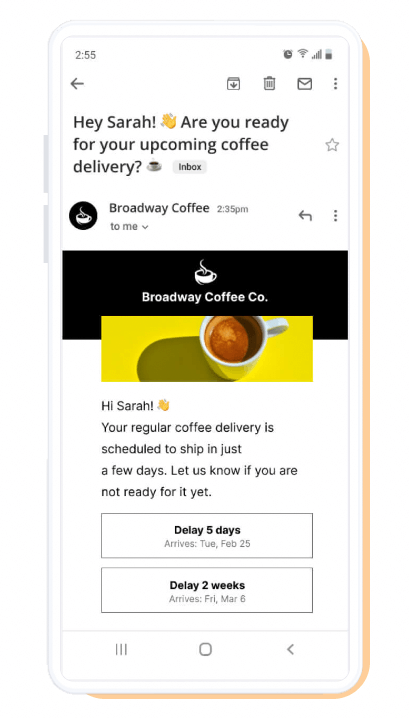
These customers get an invitation to skip their upcoming order. Now, customers don’t have to choose between canceling their order or continuing to receive a product they don’t need right away.
5. Anticipate customer issues with proactive eCommerce customer support
Proactive customer support means helping customers before they realize they need help. It used to mean preparing self-help guides and extensive website FAQs, which are still helpful. But now it means responding to social media posts in real time and agents reaching out to customers via chatbot, asking if they need product help.
This strategy is the opposite of reactive customer support, which occurs when customers reach out with a problem. And most customers would rather not contact support unless absolutely necessary.
Zendesk’s 2022 Customer Experience Trends Report found that 89% of consumers will spend more when companies let them to find answers without having to contact anyone, which means that deflecting issues before they start is vital to customer retention. The same report found that 61% of consumers would switch brands “after just one bad customer service experience.”
Digital helpdesks like Gorgias integrate with Magento, BigCommerce, and Shopify to provide proactive experiences.
Gorgias pulls omnichannel customer inquiries into a single dashboard for agents to review. An anxious customer might ask a product question on Instagram and follow up with an email. An agent can instantly see the urgency and respond with an answer and a discount on the product in question.
Agents using Gorgias can also react via chat if a customer lingers on a product page for a certain period of time.
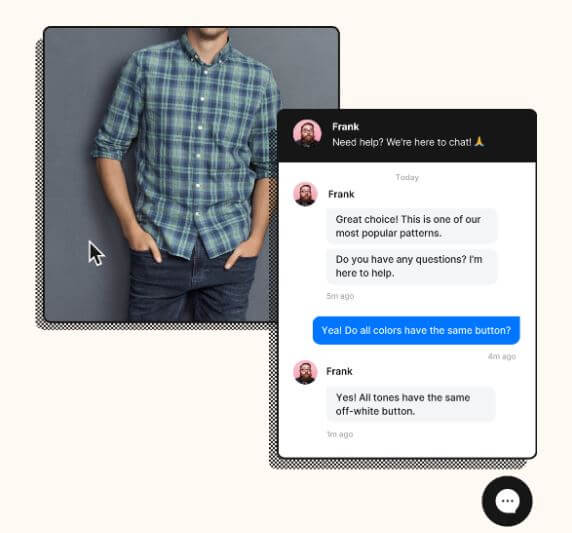
Not only do customers get the answers they need without waiting, but proactive support also reduces the need for costly returns resulting from a product mismatch.
6. Create consistent brand experiences with headless commerce
Headless commerce lets you quickly customize your eCommerce storefront to better keep up with evolving customer demands. The key benefit is maintaining brand consistency while continually iterating to improve the customer experience.
Many eCommerce platforms offer prebuilt themes, but these are not headless solutions. Their ability to adapt to your growing B2C or B2B business only goes so far. You may need to change themes to accommodate more functionality, which might cause brand confusion.
Headless commerce is not a passing fad. In a 2021 WP Engine survey, 64% of enterprise-level companies were using headless, and 33% were “evaluating” its use within the next year. Soon it will be easier for startups to take advantage of as well.
Here’s how it works. Headless commerce separates the eCommerce front end from the back end. The front end is what customers see when they shop – buttons, images, and videos. The backend powers checkouts, site security, and payments. In traditional eCommerce, any changes to the front end mean making sure the backend still functions in a way that doesn’t disrupt the customer experience. With headless, that problem goes away.
Suppose you want to add a third-party loyalty program to your eCommerce site. With a headless solution, a simple API call connects the loyalty program provider. While you may need to tweak your front end, you won’t need to update the site’s backend.
Headless commerce has a development cost, but it may be worthwhile for companies that are on a steady growth trajectory.
First, you’ll need to work with a developer who can build a headless-ready website front using tools such as Frontastic. Then consult your eCommerce provider about integrating with the front end.
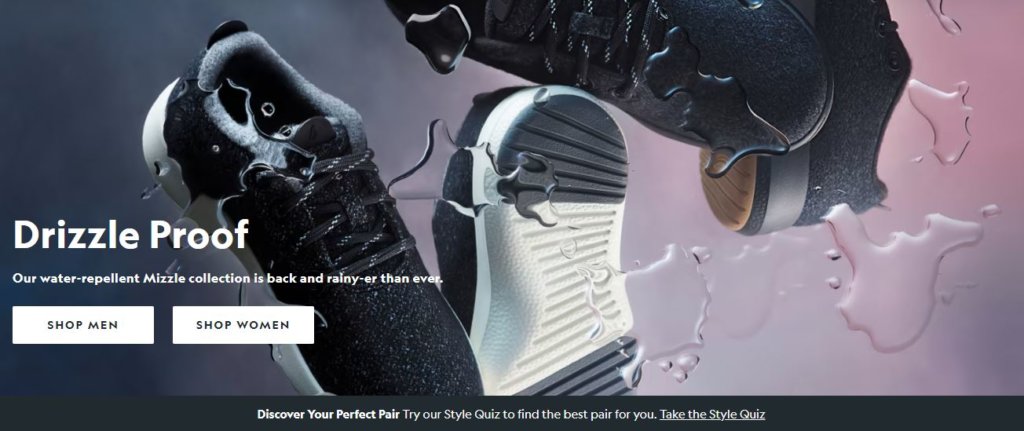
If you’re already using Shopify, use their Hydrogen tool to develop a headless storefront. Allbirds uses it to create a consistent user experience across their branded storefronts.
Hydrogen is only available for Shopify Plus members.
7. Enhance social commerce with live video shopping
Social media platforms rise and fall, but social commerce is here to stay. If you maintain a robust presence on TikTok, Facebook, or Instagram, 2023 will see wider adoption of live shopping events on these platforms.
A 2021 eMarketer study forecasts U.S. social commerce sales to hit nearly $80 billion by 2025, up from $46 billion in 2022. Until now, social commerce was limited to tagging products in static photo posts.
Customers enjoy the brand engagement that live streaming offers. Plus, they can ask questions and get answers before buying. McKinsey agrees, estimating that up to 20% of all eCommerce will consist of “live-commerce-initiated sales” by 2026.
If you use BigCommerce, Shopify, Magento, or Salesforce, you can quickly sync your product catalog with your TikTok, Facebook, or Instagram business accounts.

When customers purchase during a live video event, orders flow automatically into the same hub where you manage all orders.
First, determine which of your social networks see the most customer engagement. Use that platform for your first live video event. Then start planning.
- Promote your live shopping event, so customers can clear their schedules for it.
- Instagram lets you partner with other accounts for live shopping, so you can acquire customers from participating influencers.
- Prepare a rough script of how you want to message the products featured in the event.
- Do a dry run of your video offline before you go live.
8. Adopt digital wallets to drive convenience
Digital wallets not only give customers the convenience of another payment method, but they also speed up the checkout process. And they’re getting easier for you to deploy.
A 2022 Worldpay report projects that digital wallets will make up 53% of eCommerce payments by 2025, up from 49% in 2021. Google Pay, Apple Pay, and Shop Pay are the main players. Meanwhile, the report shows that credit card payments will decline from 21% to 19% by 2025.
The appeal of digital wallets is their ability to save and encrypt information required for online transactions. This information includes a customer’s email, shipping address, billing address, credit card details, and phone number.
Digital wallets share this information with their merchant partners, which means that repeat customers no longer need to enter this information each time they place an order. Shop Pay has the added benefit of letting customers track their orders from within their wallet.
Make sure your payment gateway is compatible with the digital wallets you wish to add. Stripe is one of the safest options. Then connect the wallet to your eCommerce platform via an API. Digital wallets won’t cost you anything to install, but you’ll still need to pay transaction fees.
Refine your eCommerce experience in 2023 to succeed
eCommerce trends show that the landscape is rapidly evolving, and the only way to stay ahead is to drive higher LTV by creating unique shopping experiences that meet consumer demand for convenience and cost savings. From prepaid subscriptions to headless commerce, the B2C and B2B eCommerce trends indicate that the world is changing, and you must too.
To learn more about how Ordergroove can help you build long-term relationships with your customers, click here to schedule a demo.
